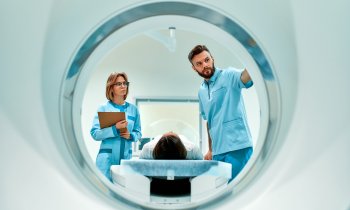Public Health
Romania: Land of hope
Although Romania joined the EU in 2007, only recently has its macroeconomic increases influenced a rise in a middle class and dented the country’s widespread poverty. However, development is still hampered by corruption and red tape in its commercial world.
Report: Daniela Zimmermann/Brenda Marsh

Through the post-communist years and EU involvement, various IMF, EU and other financial agreements have been made to encourage structural reform and strengthen the financial sector’s stability. In 2013 Romania’s economic growth rose due to strong industrial exports and an excellent agricultural harvest, and the country’s current account deficit was substantially reduced.
At the end of 2014, the economy showed a 2.8% growth – lower than the 3.5% posted in 2013. Industry output came top in revenues with exports (70% to the EU) still behind economic growth. In that year the Romanian government had met its annual target for the budget deficit, the external deficit remained low, and inflation was lowest since 1989.
Thus, in 2014, there was a gradual loosening of the monetary policy – but reports indicate that progress on structural reforms has been uneven and the economy is still vulnerable to adverse external events. Internally, its tax evasion, weak domestic demand, ageing population and insufficient healthcare represent top liabilities.
Acknowledging her considerable skills in public and global health issues, clinical research, medical education, programme evaluation, international health policy, the epidemiology of infections and emerging and re-emerging infectious diseases, Daniela Zimmermann of European Hospital asked Monica Deac MD PhD for a brief overview of Romania’s healthcare delivery.
A little background
With medical studies at Cluj University in Romania behind her, Deac worked as a general practitioner from 1979-1982, and took on the role of epidemiology and infectious diseases resident for the Medicine and Pharmacy department at the university in 1983. ‘I began my research activity in the Cluj Hygiene Institute and even today I work in this branch as a first degree researcher,’ Deac explained, adding that she became an infectious diseases specialist in 1987 and gained her doctorate in 1995.
In 1996 the expert gained the title First Degree Scientist and Researcher and, a year later, produced her first book. In all, Deac has notched up more than 20 years as a teacher and over 32 years at the university.
Qualifying in laboratory medicine in 2004, she became involved in several infectious diseases projects, including nosocomial, streptococcal, staphylococcal infections and others related to children and adults, as well as urinary tract infection (UTI) in the elderly.
Now a senior epidemiologist and associate university professor in the Biology Faculty (epidemiology, hygiene, medical education, microbiology) at Cluj Babes Bolyai University, Deac says: ‘I’m coordinating some infectious disease prevention from Transylvania/Romania, while working in the Public Heath Centre in Cluj, and also doing morbidity and mortality studies for them.’
Leading causes of death
‘As everywhere else, cardio-vascular diseases are in first place for us. In recent years even the incidence of cancers is higher than 10 years ago. Concerning infectious diseases, the situation is also growing, but in normal limits and winter, especially for respiratory viruses, we have less reported influenza cases.
‘CC (cervical cancer) continues to be at a high level in females before 50 years of age. In the rest, all diseases in Europe are also present in Romania. Maybe in seasonal limits (summer time) a morbidity concerning diarrhoea in all ages in the population, caused by lower rural hygiene conditions, is remarkable.’
She has worked on a study of diarrhoea in the population and, relating to this, it is noted that only around 28% of the rural population is connected to a proper central water supply. Most families use private or public wells, with little or no pollution control – and seven million people use pit latrines.
Information regarding the quality of drinking water in Romania’s rural areas is unavailable to the population. Often, they are also unaware of the interconnections between the quality of water, sanitation, hygiene, fertilising of the soil and general health. The country has until 2018 to implement EU regulations within the EU Water Framework Directive.
Disease notifications
‘There are less internal data to compare with other countries,’ Deac points out. ‘Romania transmits all illness data to the WHO. In some studies about antibiotics use in Europe, Romania’s practices are increasingly included. The country is monitoring some diseases and especially looking for infectious diseases caused by someone arriving from abroad, for example importing malaria, etc. Our data are sent to CDC/WHO, which makes the general statistic data for several illnesses.
Government prevention measures
‘There are immunisation programmes for several infectious diseases (dates for age grouped children) up to the CDC and OMS demands, education carried out by several medical clinicians, in the clinic or by the family doctor in the practice and, of course, by doctors from Public Health institution branches.’
EU healthcare support
‘Up to now there hasn’t been much European Union healthcare support. More is obtained from ideas than from direct financial help.’
Medics’ migrations
‘This is a difficult situation because we continue to lose more and more doctors and have received some from Moldova and India. Two thousand five hundred Romanian doctors have left already – in the last two to three years. The cause is the bad salary we continue to have in our country.’ Romania provides 1.9 physicians per 1,000 people and has 6.6 hospital beds for the same number. Life expectancy is 71 years for males and 78 for females. The probability of not reaching age 60 is 21.6%. However, life for Romanians is slowly improving and a change in the public’s satisfaction with it should show signs of improvement in the future – if the world and its economies can remain stable.
PROFILE:
With native language Romanian, and fluent German and Hungarian, plus English and French, the internationally recognised epidemiology and hygiene expert Dr Monica Deac is active in many international disease-related societies.
19.06.2015








